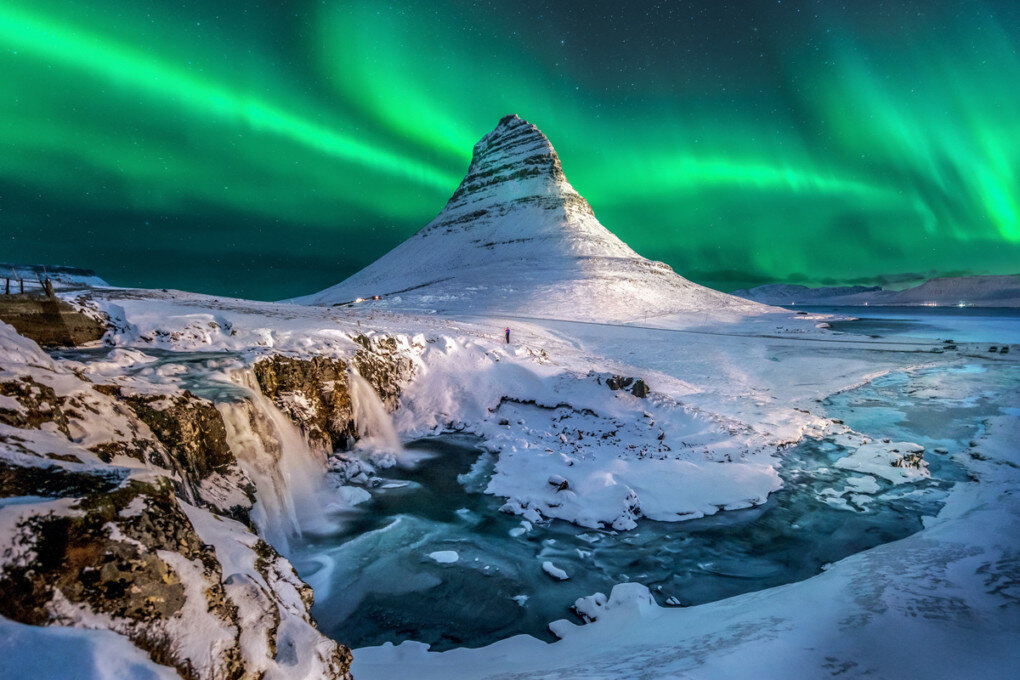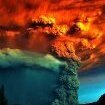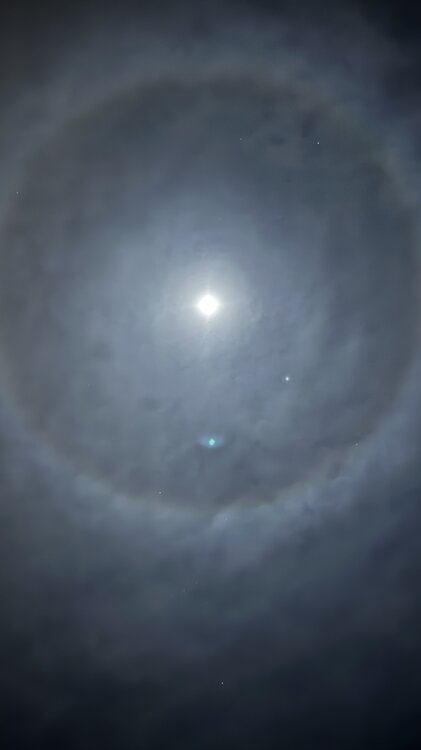-
Posts
1,515 -
Joined
-
Last visited
Content Type
Profiles
Blogs
Forums
American Weather
Media Demo
Store
Gallery
Posts posted by Volcanic Winter
-
-
2 hours ago, LibertyBell said:
northern lights too?
did you see the amazing display we had down here in October?
That October display here really was unbelievable, not something we’ll see topped for a long time if ever. The sky here was vivid pink and purple…
It seemed like the sun shut off soon after they declared solar maximum, or at least activity died down quite a bit while we were in Iceland. On top, the sky was cloudy with precipitation for most of our trip - so it wasn’t a great Aurora trip. Thankfully we had tons of snow!
-
 1
1
-
-
4 minutes ago, LibertyBell said:
so even up there, the coast in Iceland doesn't get much snow?
did you see any northern lights?
the display down here in October was absolutely historic!
Reykjavik sits at the east end of a peninsula that often juts into the warmest air mass in the region, but they do absolutely see snow and they got some once we were out in the deeper parts. It's just the timing of the weather system was such that the snow turned on once we drove inland.
Only saw a brief aurora this trip, frankly we had precipitation for most of the ten days we were there! Not many chances, but we had SO much snow and I've seen incredible auroras now so many times, it was a fair trade to play in crisp Icelandic snow for most of the trip.
-
 1
1
-
-
Iceland in winter is awesome!!
We did four nights in Reykjavik to capture the Xmas vibes then moved out to the country where it became a total winter wonderland. At one point we had like 36 hours of steady light to moderate snowfall without any substantial wind (somewhat rare) - absolutely perfect conditions! About 18-28 degrees out there for most of the trip.
-
 1
1
-
-
Back from Iceland guys, was absolutely incredible… had about 36 hours of light - moderate snowfall when we went deeper in away from the coast. Winter wonderland, around 18-28 degrees the whole time. I’ll get some pics up in the banter thread.
Also, 6.3 for a low overnight at my house without snowcover - that’s seriously impressive. That beats the most recent cold wave around the holiday a couple years back by two full degrees here.
Edit: Link to pics
-
 5
5
-
 3
3
-
-
I know this is silly, but I’m absolutely loving this. I had resigned myself for a continuation of what we had in November, and with our tendency to only have a couple day brief cooldown followed by more warmth - this is pretty incredible. Good exposure to the temps we’ll be having in Iceland this time of year in about ten days, especially when we go towards the coastal interior. Right now tracking spots we’ll be staying in going down to 5 degrees - won’t be quite that cold I don’t think when we get there but it’s possible!
To kick off December and Christmas season with some real winter weather is just amazing to me and feels like a precious commodity anymore with the regime we’ve been under.
-
 1
1
-
-
11 hours ago, Allsnow said:
EPS is deep artic to start December
coldest since 2017?
I just did a double take checking my temps. On the western edge of Toms River, my nighttime lows are always cold in my location and on good radiative cooling nights I’m not far off some spots in north Jersey.
But I’m seeing daytime highs in the 30’s to start December, potentially? Wild.
-
 1
1
-
-
God I love -EPO.

-
 3
3
-
-
3 hours ago, MANDA said:
Shit! The heaviest is south and east of me !


I’ll take it
-
-
She’ll do.
My yard looks like if I flicked a tree or plant it would crumble to ash and blow away in the wind. I’m near the cutoff to the zone of the worst drought stage in the area. We only got like .15 “ of rain the other day, basically nothing against the kind of deficit we’re running.
-
I’d really love to ditch the trough in the west look every time we happen to have a trough here, add that to the southeast ridge as something that’s given me serious weather trauma the past couple years.
Really hoping to have a wintry Iceland trip in December, but they’ve been having some incredible warmth trapped under a major ridge. Some of the cams in the north are completely devoid of snow; when we toured the north in Nov 2022 it was like being in arctic tundra (everything I’ve ever wanted lol).
-
32 here
-
2 hours ago, Allsnow said:
Would be nice to finally drop below 32 here at home. All I have had is some light frost at 34 degrees. This is pretty late for my area not to drop below.
While I miss the 80 degree weather it finally feels like November today
Crazy, I would’ve figured your area would’ve hit freezing already too. I’ve been down to 29-31 a few nights already. Pine Barrens gonna radiate I guess.
-
69.6. Just a tad above average.

-
This is pretty insane. 64f at 12am.
-
With respect to the AMOC, we just don’t know enough yet regarding the effects of a switch to the slower, more southerly configuration in the modern interstadial climate. We know what happened during the Younger Dryas in terms of climate shifts, but things are different today.
It’s very much a “pick your source” thing right now. There are good papers showing a 1-2C drop along the US East Coast and as much as 5-6C drop up in Scandinavia, and there are papers that confine the cooling to Scandinavia and broil the East Coast. There are new papers from 2023/24 showing a “restructured” northern branch of the AMOC (“shutdown”) is possible as early as a few years to a couple decades, with increasing likelihood from then on.
We don’t know enough yet, but we’re learning fast. Would be foolhardy to assume A) it won’t happen anytime soon and B - precisely what the effects will or will not be. Models often significantly under or overestimate various factors as we see on a weekly basis here with just basic forecasting.
-
 2
2
-
 1
1
-
-
Already at 30 this evening. Been dropping pretty fast tonight.
-
48 minutes ago, MJO812 said:
Need to get the old winter regimes back.
Maybe when the PDO and AMO flip? Thinking our best chances may be the back end of this decade, especially if the PDO begins to flip in the next two years or so as I’ve seen some suggestion of. No way of knowing yet though, of course.
I think we need to see that intense marine heatwave off Japan calm down first.
In hindsight I’m trying to stay positive that I’ve been relatively lucky so far this decade given how abysmal things have been. Eked out more snow than Boston last year, had an epic storm in 2022 here, and 2021 was pretty great even if not the best down at my house.
-
15 hours ago, snowman19 said:
If the new EPS is correct we go into a torch-a-rama pattern come mid-month. Massive -PNA trough into the west, +NAO, +AO, +EPO and the SE ridge goes bonkers
Crazy. Do you think there will be a flip in December before January / Feb likely goes very warm again?
-
 1
1
-
-
7 minutes ago, 495weatherguy said:
Awesome weather!
In the correct season, sure.
I enjoy fall for the cool, beautiful time of year that it’s supposed to be. We shouldn’t be this warm - sustained - heading into Nov. A day or two, or three, - I’ll give you. It’s a given anyway these days
-
 1
1
-
-
2 hours ago, forkyfork said:
two broken so far
84 here.

-
Still bone dry down here. Enjoy the raindrops!
What a crazy fall.

Low for the month: 29.3
High: 83.5
Rain: Zero.zerozero
Wild!
-
1 hour ago, FPizz said:
31 this morning, one of the few times the low was 5 degrees lower than the forecast 36.
I hit 35 this morning twice it looks like, definitely a bit below our forecast low as well.
Our leaves down here went pretty much from green to red and then down, and everything is starting to look a bit grey.
-
 2
2
-
-
This has been an interesting fall progression so far with some early chills leading to early leaf changes, before flipping back to the endless summer pattern that’s so common anymore.
I’m really curious if we can manage a cold Dec (cool?) even if the whole of DJF is mild to warm.
If talking preferences I tend to prefer a front loaded winter anyway. Nothing beats a seasonal holiday season.
-
 1
1
-




December 2024
in New York City Metro
Posted
Topped out at 62.3 here at the Toms River / Manchester border.
Dec averaging 35.2 right now.